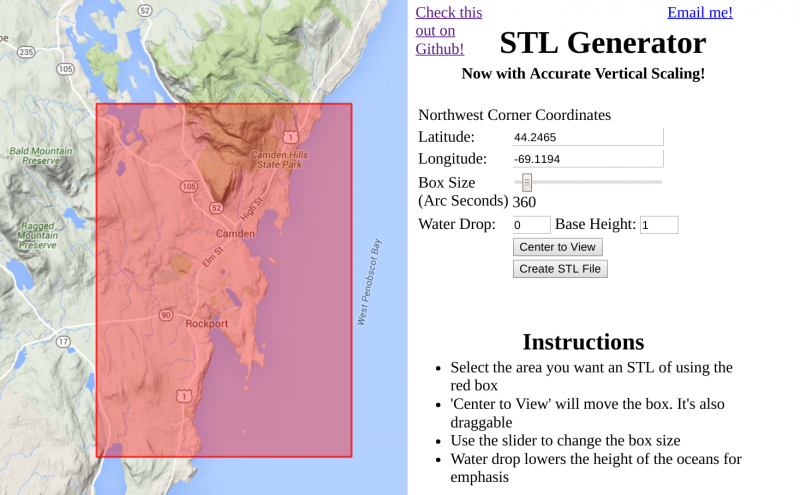Camden grad’s invention makes it into Popular Mechanics magazine
CAMDEN — When former Camden Hills Regional High School student Thatcher Chamberlin was 17, he developed an open source online program that would let anyone make a raised relief map of the earth’s surface on a 3-D printer, allowing people to create a three-dimensional solid object of the map from a digital file. He did it on his own; it wasn’t part of any school project.
“I wanted to make a model of Rockport Harbor,” he said. Nothing like this had previously existed, so Chamberlin took his data, turned it into a computer program and made his model on a milling machine. “After I created that program, I realized I could make a raised relief map of the whole world if I had the right data.”
Thinking his hobby might interest others, he assembled all of the data into a free website, calling it Terrain2STL that allows people to select parts of the Earth and download that particular part as a physical object. Imagine your favorite lake, mountain, or even your backyard in physical 3-D form.
It took Thatcher about five months to create that program—and it caught on. Schools began using his website for geography projects and local landmarks. Last year, he graduated from Camden Hills. Now, as a first year computer science student at M.I.T, he’s decided the earth isn’t enough. Thatcher decided to go for the moon, specifically to create the open source computer program Moon2STL, using data taken from a topographical model of the lunar surface by the U.S. Geological Survey.
“This took about a month to create using a lot of the same code,” he said.
Asked why someone would be interested in printing out the surface of the moon, he answered, “I’m not sure actually. I made it and then I realized, there’s not a huge amount of reason to do that. Perhaps, you could print the area of where the moon landings happened.”
After posting his moon website in Reddit’s 3D printing community, that particular creation caught the attention of the website Motherboard, which interviewed him for an article. Soon after, and to his surprise, Popular Mechanics magazine picked up his story.
“I just found out the story popped up,” he said. “Afterwards, I ran into a few people who’d seen it; it was kind of exciting.”
Right now, he’s working with a man who wants to fashion custom cocktail tables with 3-D printed topography carved out of wood below the glass surface. “So, picture looking at a range of mountains or the San Francisco Bay underneath the glass,” he said.
Since Thatcher has done all of this work for free and released it as open source, where people can crowdsource new design features, he has never had an eye on capitalizing on his invention.
“Right now, I don’t have enough time to develop it into something that’s really marketable, so I just had a little donation button on my website, maybe $5 if they feel like using it for their own projects.” He said he’s made a little money this way. “That’s just the way a lot of software is done these days.”
Pretty cool. Maybe Thatcher’s invention, and the Steel House in Rockland, will be ways for people to create a very unique piece of Maine for themselves.
Kay Stephens can be reached at news@penbaypilot.com


































